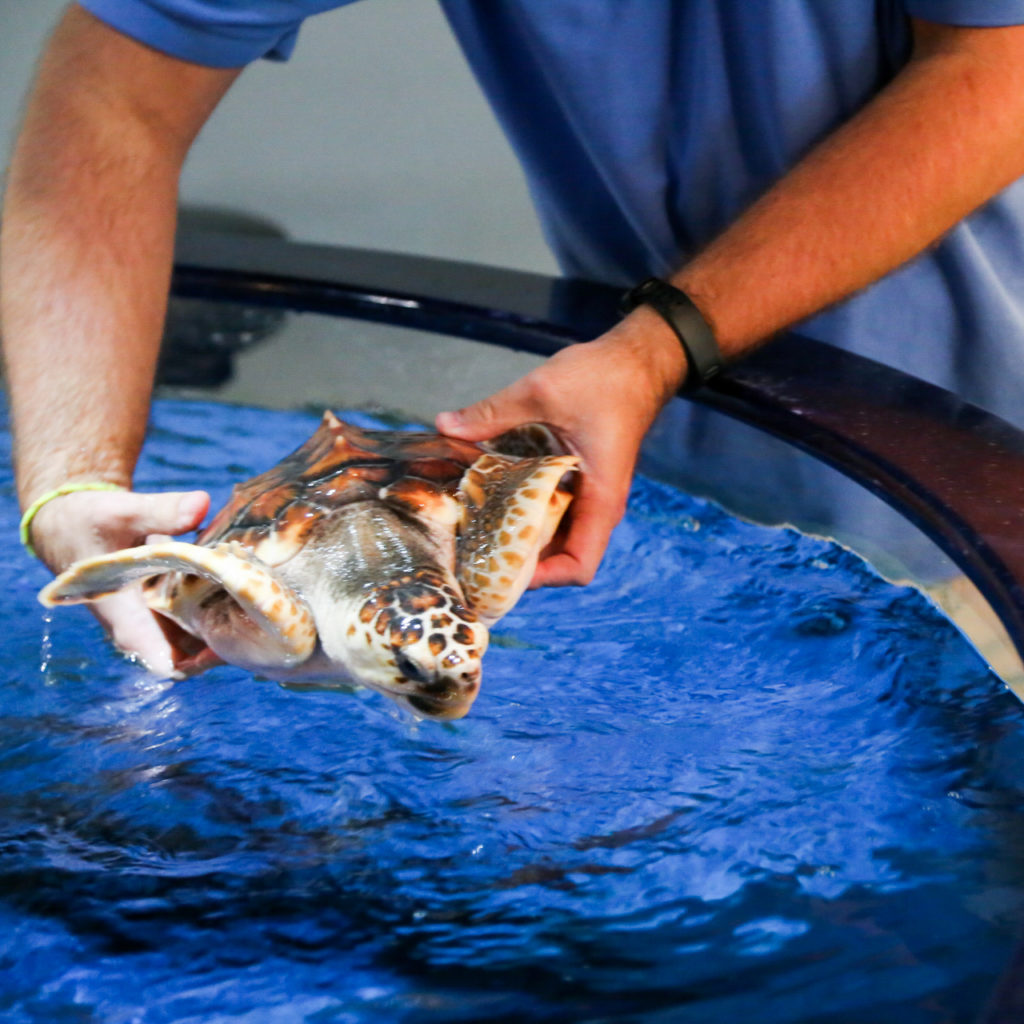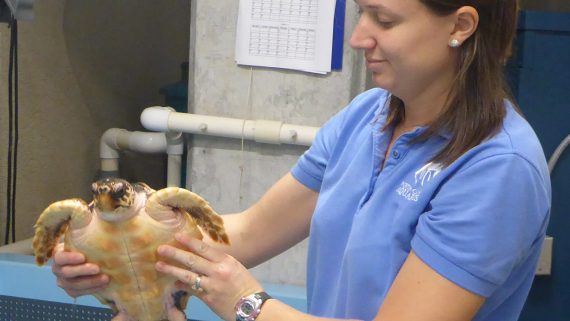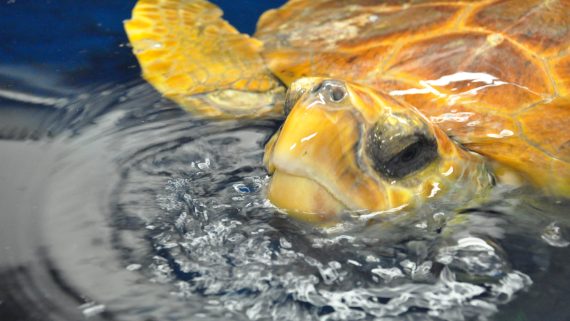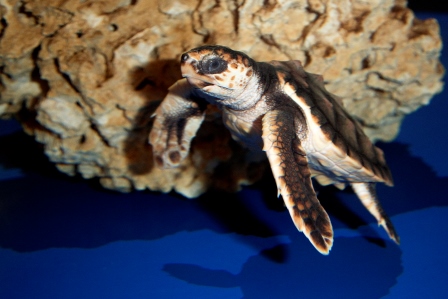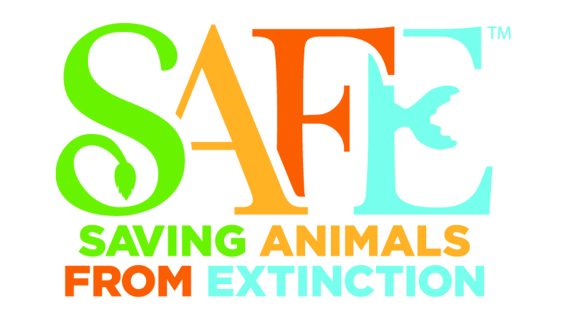The School Season Begins Anew
Hello Everyone and Welcome Back!
Waving a fond farewell to summer and with a hint of fall in the morning air, another school year begins. As you sharpen those No. 2 pencils, it may be difficult to believe sea turtle hatchlings are still making their way out of nests on the beach. However, nesting and hatching season in North Carolina lasts through October. At the time of this writing, we have had 1225 nests along the N.C. coast and an estimated egg count of more than 100,000. While this number seems staggering, it is actually pretty normal compared with past years. It is reassuring to see this stage of the sea turtle life cycle on our coast.
As terrestrial beings, we normally do not have the opportunity to see sea turtle hatchlings make it to yearlings. But here at the Aquarium, we can watch this fascinating progression with two hatchlings that are brought in each summer. These babies are found when a nest is excavated 72 hours after a sea turtle nest hatching, also known as a boil, occurs. These turtles are not strong enough to get all the way out of the nest so they make good candidates to be cared for at the Aquarium. Our team cares for them. They receive visits from our veterinarians and are weighed and measured weekly to make sure they are healthy and growing. After they become yearlings and hurricane season winds down, they are released directly into the warm waters of the Gulf Stream to start their journey on their own. By that time, we have two new hatchlings ready to begin the cycle again.
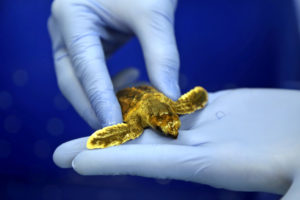
One of our new loggerhead hatchlings
It is nearly that time of year. Our yearlings only have one more month with us before their release. These turtles have grown so much in the past year! The measurements for turtle A are 2551 grams and 25.9 cm and turtle B is 3785 grams and 29.4 grams. Two new hatchlings from nests on Kure Beach are also in our care. You can follow the hatchlings’ progress throughout the year by adopting one of them and using this lesson plan in your classroom. You will find the table of their progress at the bottom of this post.
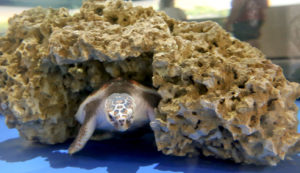
A yearling loggerhead scheduled to be released in October
We cannot nurture and care for most of the hatchlings on our coast. Instead we can hope for the best for those hatchlings heading out to sea and make sure our actions on land do not negatively impact them. Remember to not leave anything behind at the beach and pick up any trash you see. You can also switch from single-use plastic items, such as grocery bags and water bottles, to reusable bags and bottles, even if you don’t live at the beach. No matter where you are, skip the straw at restaurants and save a sea turtle. Find out more about plastic pollution in our new lesson plan, Sargasso Sailing, and stay tuned for more sea turtle fun this year!
[table id=11 /]


